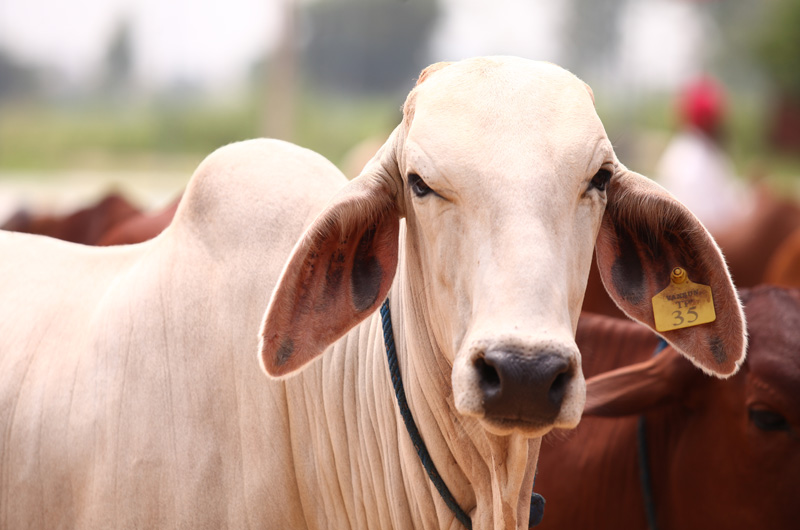Moo! Don’t worry; we don’t expect you to make out whether this Moo belongs to an Indian cow or some exotic breed. However, what we do care about is whether you can decipher the difference between A1 and A2 milk—the not-so-latest but highly-imminent quandary facing the dairy sector.
If you aren’t sure why we have jumped from talking about indigenous cattle to milk proteins, let’s double back a little and get into details. We promise to make it a fun read!
The Origin Story
Long, long ago, India had over 120 indigenous cattle breeds, which served as enviable sources of nutrition to our populace. But as the population exploded, it became strenuous to keep up the milk production. This led to the genesis of Operation Flood, a revolution thoughtfully captured by Shyam Benegal’s Manthan.
Long story short, it was decided to crossbreed our native breeds with exotic breeds, such as Jersey and Holstein Friesian, to improve their overall milk yield. Indeed, these foreign breeds can produce over 2x the milk produced by our desi cattle. But why is this an issue?
The Problem With Hybrid Breeds
Please excuse us while we recount another history lesson. About 10,000 years ago, some foreign breeds naturally evolved, where their milk started producing A1 beta-casein in addition to A2. And as you can endeavour, A1 began filtering through the crossbred cattle as well. (A beta-casein is a major protein component of milk.)
Now, that shouldn’t be a problem, except the A1 protein has been found to cause some very, very harmful consequences, as researched by Corron McLachlan, a New Zealand-based founder of ‘The A2 Milk Company’ in 2000.
Several studies have claimed that consumption of milk rich in A1 proteins can significantly raise the risk of type 1 diabetes, autism, digestive issues, neurological disorders, and coronary heart diseases. This happens due to the release of an opioid peptide called BCM-7 after the A1-laden milk interacts with our gastrointestinal tract, thus causing digestive issues and lowering overall immunity levels. Shocking, right?
Indigenous Breeds for the Win
Irrespective of what your thoughts are about the efficacy of traditional cow-based products, the thing is, indigenous Indian cows are extremely important. And we will tell you why.
Purely A2
The excellent attribute of desi cows, also known as Bos Indicus, is that their milk does not contain any A1 protein. Instead, native cow breeds, such as Gir, Sahiwal, and Tharparkar, yield only A2 milk. This means two things.
One, this milk is safe as you are not exposed to the detrimental effects of the A1 allele.
Two, A2 milk is healthier as, unlike A1, it produces proline amino acid, which prevents the formation of BCM-7, thereby improving the functioning of our immune system.
Better Quality
A2 milk—the type derived from indigenous Indian cows—is generally considered similar to mother’s milk in terms of nutrition. It is sweeter and thicker in composition and has a richer aroma and taste.
Health Benefits
Desi cattle-derived A2 milk is highly nutritious as it contains colostrum, which is high in antibodies. It is also extremely rich in Vitamin D and Omega 3, ideal for getting rid of excessive body fat and bad cholesterol deposits. Additionally, being seeped in cerebrosides and strontium, indigenous A2 milk enhances brain power and immunity levels. If this doesn’t give a reason enough for you and your kids to get hooked on A2 milk, then we aren’t sure what else will.
Lactose Intolerants Nation Rise
…or maybe we do. With over 60% of the Indian population being lactose intolerant, it has become imminent to source milk appropriate for this section of society. And, in case you have missed out on the memo, indigenous breeds’ milk works well for lactose intolerants.
This is because A2 milk prevents the formation of BCM-7, which is infamous for causing ulcers, inflammation, diarrhoea, and other digestion issues.
Au naturel
In contrast to hybrid/foreign breeds that have been artificially injected with growth pheromones to raise their milk yield, indigenous cows suffer through no hormonal injection and antibiotics. As a result, their A2 milk is better and healthful, albeit in lower quantities.
Physical Attributes
Another brilliant fact about indigenous cows is that they are humped, which enables them to better absorb Vitamin D. Also, they are less susceptible to diseases, minimising the likelihood of being treated with antibiotics and vastly enhancing their milk quality.
Food Sources
Finally, native breeds are usually free-grazed on natural grass like paonya. This imparts higher nutrition and greater taste to the milk from these cows. Some even regard ghee produced from such free-grazed cow’s milk as best-in-quality.
Buy Healthy to be Healthy
Milk (and ghee) sourced from crossbred cows may cost little but costs our health immensely. Now that we are becoming health and environment conscious, it is on us to demand natural, organic, hormone-free, and nutritious A2 milk to reap its full benefits. After all, organic milk and ghee from sustainable packaging at a fair price is better than what you get out of plastic packets and jars.

